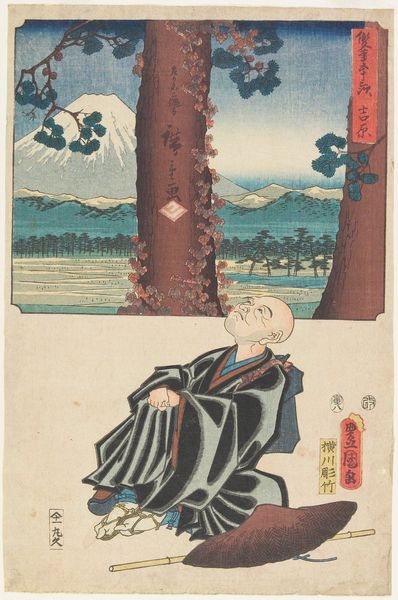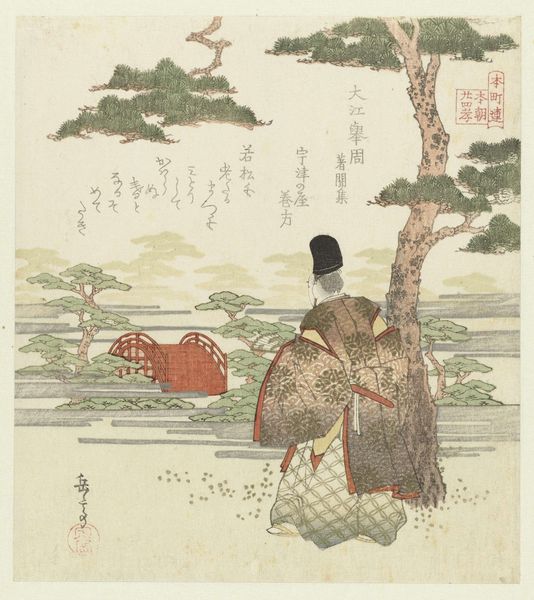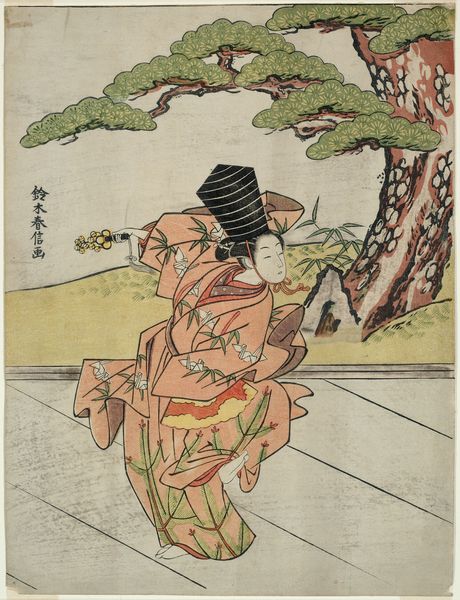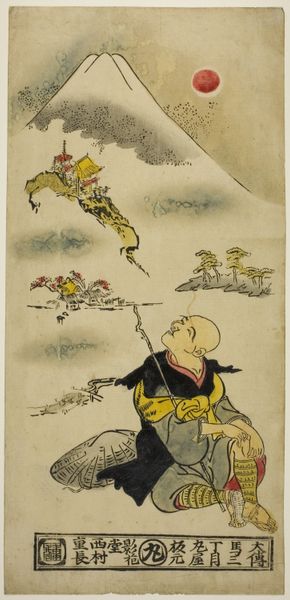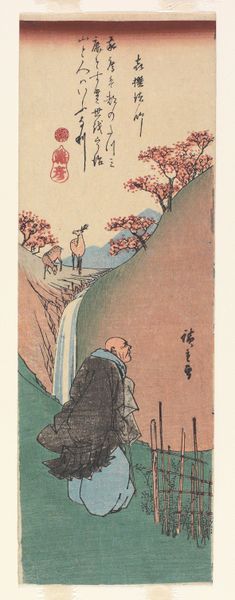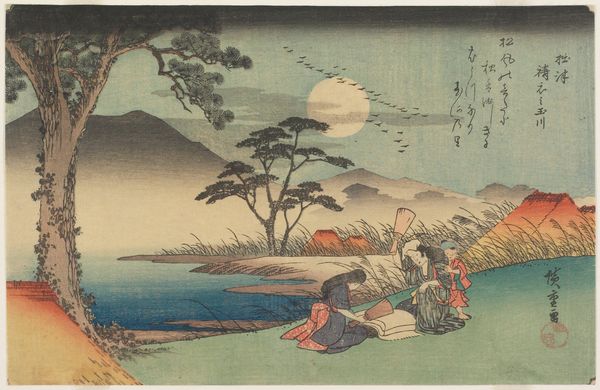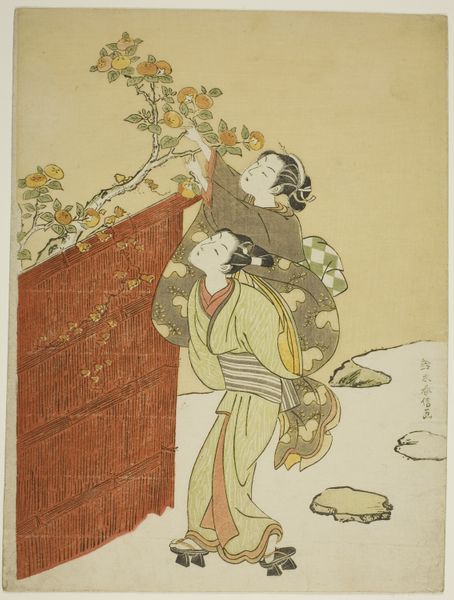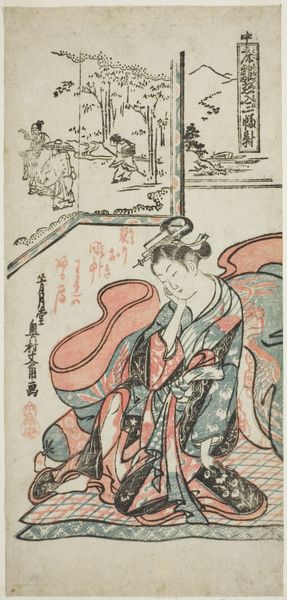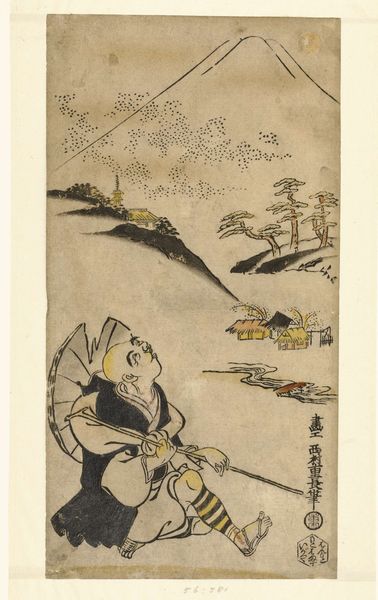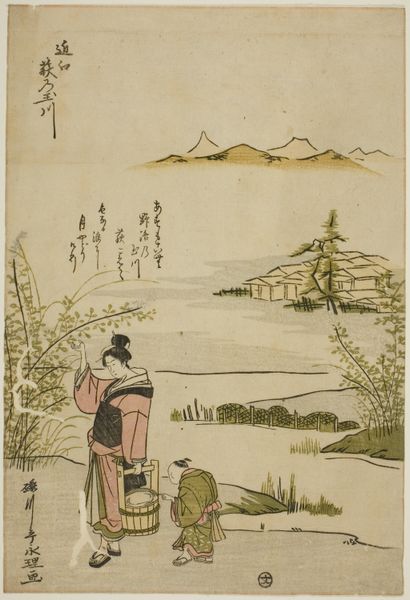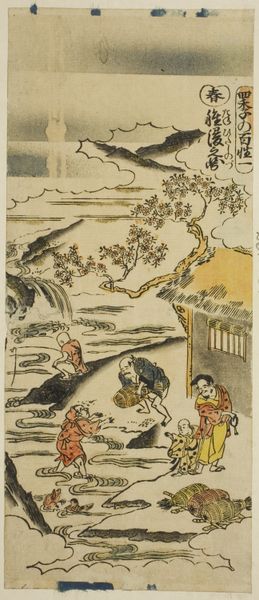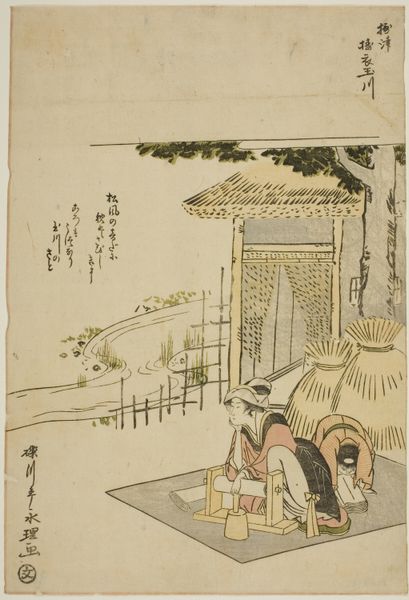
drawing, print, ink
#
portrait
#
drawing
#
ink drawing
#
ink painting
# print
#
asian-art
#
landscape
#
ukiyo-e
#
ink
Dimensions: 32.8 × 14.0 cm
Copyright: Public Domain
Curator: This print by Okumura Masanobu, dating back to the 1730s, is entitled "Saigyo Hoshi." It resides here at the Art Institute of Chicago. Editor: It’s striking! The monk's gaze drawn upwards, that almost cartoonish quality…and the simple tools he carries. There is a contrast between the roughness of those marks and what seems to be almost sacred reverence. Curator: Absolutely. The composition itself positions Saigyo within a layered landscape—a village nestled in the middle ground, a dotted mountainside and, towering in the distance, perhaps Fuji, all under a celestial body—invites exploration into his historical and spiritual significance. Editor: And how Masanobu creates all that with what appears to be a restricted palette of black ink and varied mark-making. You can practically see how the ink settles on the paper, see where the artist's hand lingered to create depth. It’s the materiality that gives the sacred presence—not in an obviously worshipful way, but like a material practice. Curator: I agree. Consider also, that the figure of Saigyo, a poet-monk from the Heian period, holds profound weight in Japanese culture, especially as a figure in popular literature. The work is an important study of masculinity as well—it presents a gentle male presence in counterpoint to a military aesthetic that was otherwise very popular. Editor: That attention to production – how it's printed, the ink used, and its context within a longer visual lineage – it transforms this piece from just a nice portrait of a monk, doesn't it? It ties the figure to a network of producers and viewers and the conditions of their work and aesthetic outlook. Curator: Precisely, placing Saigyo in a lineage of resistance. It's tempting to see this work as purely devotional but it speaks volumes about cultural identity and challenging expectations of gender and power through imagery in the ukiyo-e tradition. Editor: It brings me back to how artists have, for centuries, relied on the physical to grapple with bigger ideas. A flat image of a man is about identity and the material process itself ties that figure to place and ideology. Fascinating. Curator: It does underscore that potent link, doesn’t it? This journey into "Saigyo Hoshi" certainly demonstrates the multifaceted and ongoing dialogue between identity and material production in art history.
Comments
No comments
Be the first to comment and join the conversation on the ultimate creative platform.
